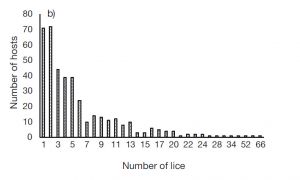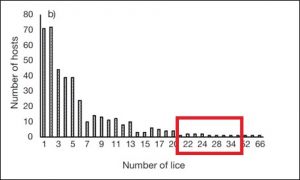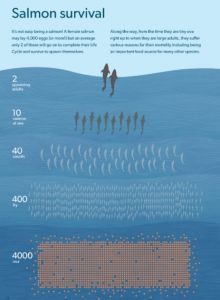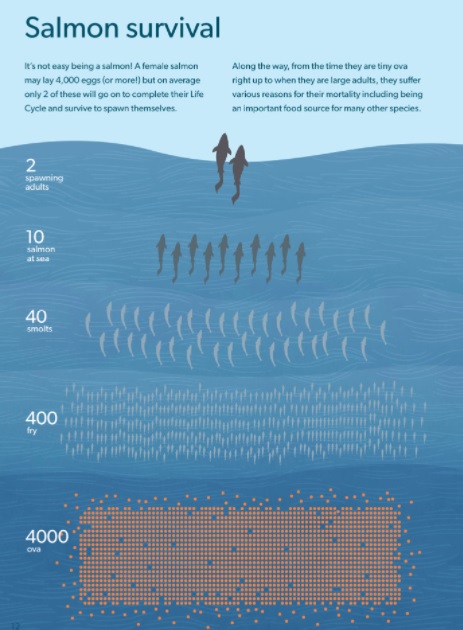Seaspiracy: There has been much talk about the film Seaspiracy. For me the most telling fact was revealed in the Daily Mail. This is that the filmmaker Ali Tabrizi is a ‘staunch vegan’ and his parents run a vegan cake business. If Mr Tabrizi chooses not to eat fish, then that is his decision. Much of the UK population are more than happy to do so and that is their choice.
I monitor fish consumption monthly, especially relating to chilled fish. There was an expectation that the film might have had a negative impact on consumers and consumption would be hit. Actually, the reverse is true. Fish consumption has increased over the month prior to the release of the film. The monthly increase was 0.6% but following the weeks of broadcast, overall consumption has increased to 1.26% month.
And as a note to the vocal critics of the salmon farming industry, consumption of salmon increased by 1.38% for the month.
The science: In the last issue of reLAKSation, I discussed the wild salmon crisis as stressed by the recent Atlantic Salmon Trust (AST) on-line event. I mentioned that the AST highlight the need for good quality, robust and independent evidence, yet the evidence against salmon farming is largely circumstantial. I realise that I am regularly criticised for refusing to acknowledge the accepted evidence, but I often find that the substance of peer-reviewed science does not match the claims made for it. A case in point is that latest version of the ‘summary of the science’ about sea lice from Marine Scotland Science. This states:
“Analysis of historical rod catch records from Scotland systematically allocated Scottish rivers into 3 areas: draining into the North Sea, Irish sea, or Atlantic Ocean, which for west coast mainland rivers is via the Minches. Catches of wild salmon after the late 1980s declined on the Scottish Atlantic coast relative to elsewhere (Vøllestad et al. 2009). This area covers the majority of mainland Scotland’s salmon farms although the authors stressed that this did not prove a causative link with aquaculture. Ford & Myers (2008) compared indices of salmon abundance on the east and west coasts of Scotland together with farm production data. They found a relative reduction in the catches and counts of salmon on the west coast correlating with increased production of farmed salmon.”
Regular readers of reLAKation will know that I have examined the data from both papers and neither of the claims made above are supported by the substance of the research. The Vøllestad paper was submitted to the Salmon Interactions Working Group as evidence of the impacts of salmon farming, as recorded in the meeting minutes. This is one reason why the outcome of the SIWG should also be questioned.
The introduction of the ‘summary of science’ states ‘Here, a summary of the evidence from the peer-reviewed literature is presented, to inform assessment of the risk and effect of lice arising from salmon farms on Scottish wild salmonids.’ Unfortunately, the summary reflects the thinking within MSS that salmon farms do have an impact on wild salmon. What is missing is the science that salmon farming does not have the claimed impacts.
During my research I came across a review paper from 2006 on the internet. It is a review paper that does not appear to have been cited in any other research paper. Equally, its author does not appear in any other sea lice research. However, the detailed review does highlight issues that are not covered elsewhere. For example, it was this review that brought the fact that sea lice are not normally distributed in the wild but follow an aggregated distribution.
This review paper states:
“There may of course be many reasons for a decline in levels of natural populations such as sea trout and the ultimate cause of mortality in wild fish is very difficult to define. It is also difficult to prove a cause/effect relationship between the infection of wild fish and mortality, with extrapolation from aquarium experiments to wild populations being extremely problematical. It can also be difficult to draw conclusions from complex patterns of wild fish population decline.
Overdispersion, or aggregation, is a situation where only a few hosts in a population have a large parasite burden and the majority of the host population have few or no parasites.
The overdispersion of lice on hosts creates serious difficulties in interpreting data, particularly that from wild fish. In an over-dispersed distribution, most of the lice are on a few fish with very high loads. This makes obtaining a representative sample difficult, making estimates of mean abundance and intensity unreliable.”
reLAKSation no 1020 included a commentary about sea lice infestation in the Tamar, a river over 500 miles from the nearest salmon. Measurement of sea lice number on returning salmon and sea trout produced the following graph, which illustrates a typical aggregated distribution.

For many years, the local fisheries trusts along the west coast have been commissioned by Marine Scotland Science to undertake sweep netting to sample wild fish for sea lice. Since 2010, the fisheries trusts have received a total of £624,325 from MSS for this work.
The problem is that even after so many years, the limited number of fish sampled tend to represent just one part of the total stock. Thus, in the graph, the sample might fall into the highlighted area.

Clearly, the small sample caught as part of the fishery trust netting programme are not representative of the whole sea trout population. The majority of potential host fish are either free of sea lice or carry one or two. Yet, if the wild fish sector is to be believed all the fish stocks found near salmon farms suffer from high level sea lice infestation, when the reality is that they are not.
Unfortunately, the same process has been used in Norway in the development of the Traffic Light model. The distribution of lice on 4,890 sea trout sampled over a six-year period from 2004 to 2010 did not fit the usual statistical models, so any fish with an infestation rate of below 0.1 lice/g-1 were removed from the analysis. This means that the model assumes that the fish are infested regardless, which is clearly not the case. In this study at least half of the samples, carried no lice and another 500 were found with just one louse.
The summary of the science published by MSS makes no mention that sea lice follow an aggregated distribution. Given the relevance of this aspect of the natural history of sea lice, this would seem to be a major omission, especially as the paper referred to is in fact an internal MSS report. The author is not one of the members of MSS who is known for working with sea lice and salmon farming interactions. This researcher began working as an Assistant Scientific Officer for the Department of Agriculture & Fisheries for Scotland but went on to take further qualifications that led to a very different role in MSS. It seems that without anyone to promote it, the report number 12/06 was left gathering dust in the library where it remains to this day. It was posted on the internet but has since been removed.
Because some of the content of this report does not fit into the current narrative about salmon farming and sea lice, it has been side-lined. Instead, a couple of papers which have little validity, are promoted as the main evidence that salmon farming has an impact on wild salmon stocks. It is not surprising that there is such an unwillingness to discuss such research.
50% decline: During the recent AST event, Mark Bilsby of the AST told Robson Green and Jim Murray in a video that in the first year of the Moray Firth Tracking Project about half the tagged smolts went missing as they travelled down the rivers to the sea. What is unclear is whether this was unusual or is typical or even whether the fish went missing at all and it was a failure on the part of the tags that gave this result. There is still so much that we do not know.
What we do know is that normally salmon produce thousands of eggs with the expectation that one or two of the resultant fish might survive to return to the river. There is an excellent little booklet produce by Streetscapes in Ireland about the life of salmon. There is one graphic that shows the expected loss of fish through their life stages, from 4,000 eggs to 400 fry, to 40 smolts, to 10 salmon at sea leading to 2 spawning adults.

These figures are likely to be based on well-established estimates of changing numbers throughout the salmon’s life cycle. However, as we know, there has been major changes since the 1980s with the number of returning salmon falling from around 25% during the 1980s to five percent or less now. These changes are undoubtedly occurring at sea but because marine research can be extremely difficult, the focus of recent research has targeted what is happening to the fish within Scotland’s rivers. Yet, I suspect that the changes that are seen are not a direct result of pressures within the rivers but rather a direct impact of what has happened out at sea.
In 2016, the Scottish Government launched salmon conservation regulations that aimed to protect the stocks in each river or district by limiting any exploitation. These regulations are expressed through a three-level grading system which allows exploitation in waters that have an 80% probability of achieving their conservation limit.
The seven rivers that form the Moray Firth Tracking project are all classified as Grade one except the Deveron, which is Grade two. This is calculated from the number of eggs required to maintain the sustainability of the stock as recommended by NASCO and then estimating whether it can achieve that. For the Deveron, the percentage is 77% whereas for the Oykel it is 96%. The Spey is 81% which is similar to the other big east coast rivers, the Tay and the Dee. The average figure for the seven rivers involved in the Moray Firth Tracking Project is 86%.
What this suggests to me is that the five out of every hundred fish that do return to these rivers produce enough eggs between them to ensure that the rivers will probably achieve 86% of their conservation status. This would equate to about 20,000 eggs for each 5 fish so to achieve 100% probability, these rivers would require another 3,250 eggs.
During the 1980s, the 25 out of every hundred returning fish would produce about 100,000 eggs, which would far exceed the 23,250 eggs required to meet the current conservation status. In fact, the number of eggs would be more than 4 times greater than now. Clearly, these rivers have a carrying capacity of the number of fish it can support and the 100,000 eggs deposited then, would have produced a massive surplus.
I suspect that this surplus was part of the maintenance of the surrounding ecosystem, providing all sorts of natural life with food throughout the year, whether it be other fish, birds, or even later marine mammals. This bounty of surplus was probably not noticed by many of the anglers fishing the rivers because the rivers were teaming with the fish that provided their sport.
However, over the intervening years, as the number of returning fish diminished, the surplus also diminished to the point now that there is no surplus at all. In fact, the rivers are failing to achieve 100% probability of reaching their conservation status. What is likely to be happening now is that the natural life is still feeding on the eggs, small fish and even smolts in the river but as they no longer represent a surplus, the remaining stock is being eroded away. The AST say that 50% of smolts are now failing to reach the sea so that inevitably impacts on the fish at sea. Instead of 40 smolts leaving the river, a 50%mortality means that only 20 will. This means that only 5 salmon will survive at sea and only one managing to make the return journey.
It is not surprising that fishery managers are now suggesting that the numbers returning are falling below the 5% level and why ghillie’s such as Robert Mitchell are seeing less fish in the river. It is not that there are more predators preying on the salmon. It is that there is less salmon for the predators to prey on.
Along a similar vein, it is suggested that restocking does not work. This is based on the observation that stocked fish that are identifiable by clipped fins or tags are not being recaught by anglers in the proportions of the total catch expected. However, could it be that such stocked fish, that are actually in excess of the carrying capacity of the river, simply form part of the reduced surplus that feeds the river’s natural ecosystem? If these fish were not being predated on, then it could be argued that the natural wild stock would be.
Perhaps, the strategy is all wrong. It is not the conservation level we should be concerned about but whether there is a surplus of fish to sustain the river’s natural life.
The fundamental question is how this thinking relates to what has happened to west coast rivers. The answer is that the west coast rivers are much smaller than elsewhere and have a smaller reservoir of stock. Fewer returning fish would have a much greater impact on the whole stock much quicker than on the east coast. What is interesting is where the numbers have been boosted with a restocking programme such as the Carron, the catch returns have significantly increased. There is some debate as to whether the restocking programme has created a self-sustaining stock yet the probability of the egg requirement being met is 88% yet the river has only been given a Grade two classification. By comparison, the River Ewe has been classified as Grade one, yet under the 80% cut off with only a 76% probability of reaching its egg requirement. Similarly, the River Gruinard is also a Grade one river with just 74% probability of reaching the egg requirement.

